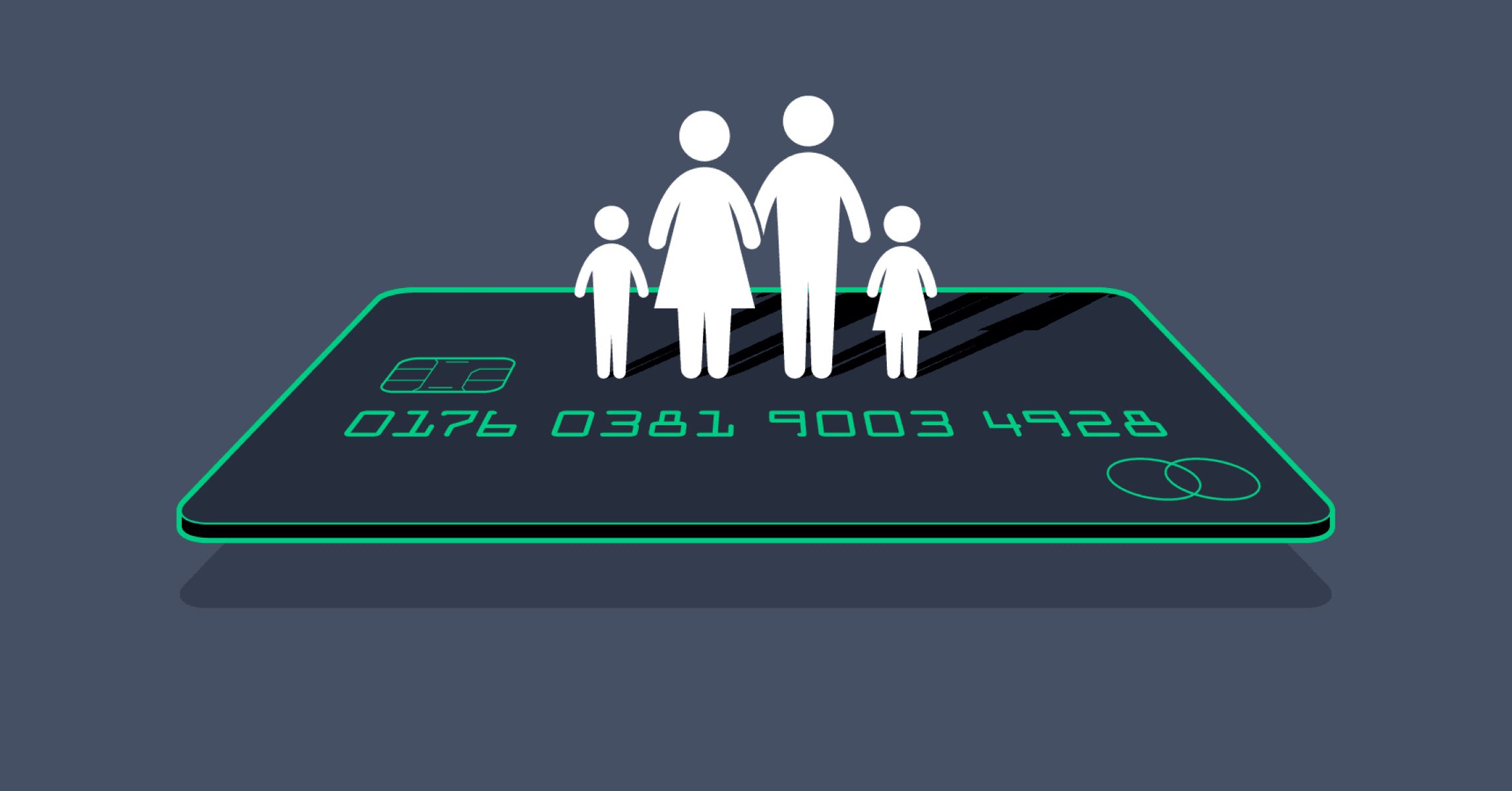

Finance
Why Did Synchrony Lower My Credit Limit
Published: March 5, 2024
Discover why Synchrony lowered your credit limit and learn how it can impact your finances. Find out how to navigate this situation and protect your financial stability.
(Many of the links in this article redirect to a specific reviewed product. Your purchase of these products through affiliate links helps to generate commission for LiveWell, at no extra cost. Learn more)
Table of Contents
Introduction
In the world of personal finance, credit cards play a pivotal role in managing day-to-day expenses and building a healthy credit profile. However, encountering unexpected changes to your credit card account, such as a reduction in your credit limit, can be both puzzling and frustrating. If you've experienced a credit limit reduction from Synchrony, you're not alone. Many cardholders have faced similar situations, prompting them to seek clarity on the reasons behind this decision.
Understanding the dynamics of credit limit reductions is crucial for anyone navigating the realm of credit cards. This article aims to shed light on the factors that could lead to a credit limit reduction, how Synchrony determines credit limits, and the steps you can take after experiencing such a change. By delving into these aspects, you'll gain a deeper understanding of the mechanisms at play, empowering you to make informed decisions and take proactive measures to manage your credit effectively. So, let's embark on this journey to unravel the mysteries behind credit limit reductions and equip ourselves with the knowledge needed to navigate the world of credit cards with confidence.
Understanding Credit Limit Reductions
Credit limit reductions can be perplexing, especially when they occur without any apparent reason. Essentially, a credit limit reduction involves the issuer decreasing the maximum amount you can borrow on your credit card. This change can impact your available credit, utilization ratio, and overall financial flexibility. Understanding the implications of a credit limit reduction is essential for managing your finances effectively.
For many individuals, a credit limit reduction can come as a surprise and may lead to concerns about its potential impact on their credit score and financial well-being. It’s important to note that a credit limit reduction can affect your credit utilization ratio, which is a key factor in credit scoring models. Your credit utilization ratio is the amount of credit you’re currently using compared to the total amount of credit available to you. When your credit limit is reduced, your utilization ratio may increase, potentially signaling to lenders that you are using a higher proportion of your available credit, which can impact your credit score.
Moreover, a credit limit reduction can also affect your ability to make purchases, especially if you regularly utilize a significant portion of your available credit. It may lead to declined transactions or over-limit fees, causing inconvenience and financial strain. Understanding the potential consequences of a credit limit reduction underscores the importance of actively managing your credit and being aware of the factors that could contribute to such changes.
Factors That Could Lead to a Credit Limit Reduction
Several factors can contribute to a credit card issuer’s decision to reduce your credit limit. Understanding these factors can provide insights into the circumstances that may prompt such a change and empower you to take proactive measures to mitigate the risk of a credit limit reduction. Here are some common factors to consider:
- Changes in Creditworthiness: Your creditworthiness, including your credit score, payment history, and overall financial behavior, plays a significant role in determining your credit limit. If your credit score has declined, or if the issuer identifies concerning patterns in your payment history or credit utilization, they may opt to reduce your credit limit as a risk mitigation measure.
- Reduced Income or Employment Changes: A decrease in your income or significant changes in your employment status can impact your ability to manage debt and meet financial obligations. Credit card issuers may review your income information periodically, and if they observe a substantial decline, they might adjust your credit limit accordingly.
- Account Inactivity: If you have a credit card that remains inactive for an extended period, the issuer may decide to reduce the credit limit associated with that account. Inactive accounts present a dormant risk for the issuer, and they may choose to reallocate credit limits to active accounts or minimize exposure to potential losses.
- Market Conditions and Economic Factors: External economic factors, such as recessionary trends or financial instability, can influence credit card issuers’ risk assessment and credit management strategies. During challenging economic periods, issuers may proactively adjust credit limits across their customer base to mitigate potential losses.
By being mindful of these factors and their potential impact on your credit limit, you can stay attuned to changes in your financial circumstances and take proactive steps to maintain a healthy credit profile.
How Synchrony Determines Credit Limits
Understanding how Synchrony, as a credit card issuer, evaluates and determines credit limits can provide valuable insights into the factors that influence your credit standing with them. Synchrony employs a multifaceted approach to assess creditworthiness and determine suitable credit limits for its cardholders. While specific algorithms and criteria used by Synchrony may not be publicly disclosed, several key factors commonly influence credit limit decisions:
- Credit History and Score: Synchrony evaluates your credit history and credit score to gauge your creditworthiness. A strong credit history, characterized by responsible credit usage and timely payments, can positively impact the credit limit offered to you. Conversely, a limited credit history or adverse credit events may lead to a more conservative credit limit.
- Income and Debt-to-Income Ratio: Your income and debt-to-income ratio are crucial indicators of your financial capacity to manage credit. Synchrony considers your income level and the proportion of your income dedicated to debt repayment when assessing your eligibility for a specific credit limit.
- Existing Relationships with Synchrony: If you have a history of responsible and active credit management with Synchrony, such as timely payments and prudent credit utilization, it can contribute to favorable credit limit decisions. Building a positive track record with the issuer can enhance your standing and potentially lead to higher credit limits over time.
- Market Conditions and Risk Management: Synchrony, like other financial institutions, continuously monitors market conditions and adjusts its risk management strategies accordingly. Economic factors, industry trends, and risk assessments may influence credit limit determinations, especially during periods of economic uncertainty or market volatility.
It’s important to note that Synchrony’s credit limit evaluation process is dynamic and may evolve based on changing market dynamics, regulatory requirements, and internal risk management considerations. By understanding the general principles that underpin credit limit determinations, you can proactively manage your credit profile and engage with Synchrony to optimize your credit limits based on your evolving financial circumstances.
Steps to Take After a Credit Limit Reduction
Experiencing a credit limit reduction can prompt a range of emotions, from frustration to concern about its potential impact on your financial well-being. However, it’s essential to approach this situation with a proactive mindset and take strategic steps to manage the aftermath effectively. Here are actionable steps to consider after a credit limit reduction:
- Assess the Impact: Evaluate the implications of the credit limit reduction on your overall financial situation. Consider how it may affect your credit utilization ratio, purchasing power, and ability to manage existing balances.
- Review the Reason: If the reason for the credit limit reduction is not explicitly communicated by Synchrony, consider reaching out to their customer service to gain clarity. Understanding the rationale behind the decision can provide valuable insights into potential areas for improvement in your credit management.
- Adjust Your Spending: Given the reduced credit limit, consider adjusting your spending patterns to align with the new limit. Prioritize essential expenses and reassess discretionary spending to avoid nearing or exceeding the revised credit limit.
- Manage Existing Balances: If you carry balances on your credit card, devise a plan to manage and reduce these balances effectively. High credit utilization can impact your credit score, so focusing on debt repayment can help mitigate potential adverse effects.
- Build a Positive Credit History: Engage in responsible credit management practices, such as making timely payments and maintaining a healthy credit utilization ratio. Demonstrating financial prudence can contribute to rebuilding trust with the issuer and potentially lead to future credit limit reviews.
- Consider Alternative Options: Explore alternative credit options or financial products that can complement your existing credit cards. Diversifying your credit portfolio and exploring options with favorable terms can provide additional financial flexibility.
- Monitor Your Credit Report: Regularly review your credit report to ensure accuracy and identify any discrepancies or irregularities. Monitoring your credit can help you stay informed about changes in your credit profile and address potential issues promptly.
By taking these proactive steps, you can navigate the aftermath of a credit limit reduction with resilience and strategic financial management. Adapting to the change and leveraging prudent credit practices can contribute to rebuilding your credit standing and maintaining financial stability.
Conclusion
Encountering a credit limit reduction from Synchrony can be a pivotal moment in your credit journey, prompting a reassessment of your financial strategies and priorities. While the experience may initially evoke uncertainty and concern, it also presents an opportunity to engage in proactive credit management and strengthen your overall financial resilience.
Understanding the factors that could lead to a credit limit reduction, such as changes in creditworthiness, account inactivity, and economic influences, empowers you to anticipate potential triggers and take preemptive measures to mitigate their impact. By being cognizant of these factors, you can actively manage your credit profile and make informed decisions to safeguard your financial well-being.
Moreover, comprehending how Synchrony determines credit limits provides valuable insights into the evaluation criteria used by the issuer. This understanding enables you to align your credit management practices with the issuer’s expectations and potentially influence future credit limit assessments through responsible financial behavior.
After experiencing a credit limit reduction, taking strategic steps, such as assessing the impact, adjusting spending habits, and focusing on debt management, can help you navigate the aftermath effectively. By approaching the situation with resilience and a proactive mindset, you can mitigate potential adverse effects and work towards rebuilding your credit standing.
Ultimately, a credit limit reduction can serve as a catalyst for enhancing your financial awareness and implementing sound credit management strategies. Embracing this opportunity to recalibrate your approach to credit can position you for long-term financial success and resilience in the dynamic landscape of personal finance.
As you embark on this journey of credit management and financial empowerment, remember that challenges such as credit limit reductions can be transformative experiences that propel you towards greater financial acumen and stability. By leveraging the knowledge gained from this exploration, you can navigate the complexities of credit management with confidence and fortitude, ultimately shaping a brighter financial future.














